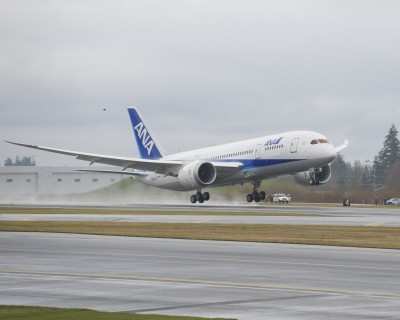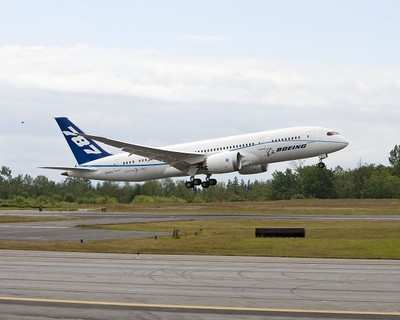Laredo Investigation Continues, No Timeline Set For Resumption
Of Flight Testing
While the investigation into the incident onboard 787 Dreamliner
ZA002 continues, Boeing has established a plan to fly two other
aircraft, ZA001 and ZA005, back to Seattle from Rapid City, SD, and
Victorville, CA. The FAA has reviewed and approved the plans.

ZA002
ZA001 was undergoing refueling in South Dakota when the incident
on ZA002 occurred and the company decided to forgo additional
flights. ZA005 was on remote deployment for testing in California.
The flights follow a series of inspections on the airplanes' aft
electronics bays. No testing will be performed on the flights.
The team investigating the incident in Laredo has developed a
detailed understanding of the ZA002 incident, though more work
remains to complete the investigation. In addition to the
information already released about the incident, data show
that:
- The total duration of the incident was less than 90
seconds.
- The fire lasted less than 30 seconds.
- The airplane concluded the event in a configuration that could
have been sustained for the time required to return to an airport
suitable for landing from any point in a typical 787 mission
profile.

ZA005
The team in Texas has completed inspection of ZA002 and has
begun to prepare to install a new power panel and new insulation
material. The team also is repairing minor structural damage that
occurred during the event. This damage will be addressed with
standard repair techniques in the airplane structural repair
manual. The team is currently evaluating the timeline for
completion of the repair work.
In a statement released Wednesday, Boeing says it has determined
that a failure in the P100 panel led to a fire involving an
insulation blanket. The insulation self-extinguished once the fault
in the P100 panel cleared. The P100 panel on ZA002 has been removed
and a replacement unit is being shipped to Laredo. The insulation
material near the unit also has been removed.
Damage to the ZA002 P100 panel is significant. Initial
inspections, however, do not show extensive damage to the
surrounding structure or other systems. We have not completed our
inspections of that area of the airplane.

The P100 panel is one of several power panels in the aft
electronics bay. It receives power from the left engine and
distributes it to an array of systems. In the event of a failure of
the P100 panel, backup power sources – including power from
the right engine, the Ram Air Turbine, the auxiliary power unit or
the battery – are designed to automatically engage to ensure
that those systems needed for continued safe operation of the
airplane are powered. The backup systems engaged during the
incident and the crew retained positive control of the airplane at
all times and had the information it needed to perform a safe
landing.
Molten metal has been observed near the P100 panel, which is not
unexpected in the presence of high heat. The presence of this
material does not reveal anything meaningful to the
investigation.
Inspection of the surrounding area will take several days and is
ongoing. It is too early to determine if there is significant
damage to any structure or adjacent systems. As part of the
investigation, a detailed inspection of the panel and insulation
material will be conducted to determine if they enhance
understanding of the incident.
Boeing officials said they are continuing to evaluate data to
understand this incident, and devising a repair plan. In addition,
they are in the process of determining the appropriate steps
required to return the rest of the flight test fleet to flying
status. No decision has been reached on when flight testing
of the 787 will resume. Before that decision can be made, we must
complete the investigation and assess whether any design changes
are necessary. Until that time, Boeing says it cannot comment
on the potential impact of this incident on the overall program
 Aero-News: Quote of the Day (05.13.25)
Aero-News: Quote of the Day (05.13.25) IAG Orders 76 Boeing, Airbus Airliners
IAG Orders 76 Boeing, Airbus Airliners FAA Shuts Down ATC Oversight Review Amid Scrutiny
FAA Shuts Down ATC Oversight Review Amid Scrutiny Montanas ADS-B Privacy Bill Signed Into Law
Montanas ADS-B Privacy Bill Signed Into Law Newark Falls Victim to More Equipment Outages
Newark Falls Victim to More Equipment Outages





